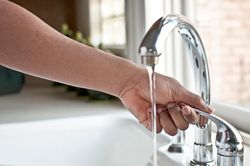
Long-time private well owners may experience a noticeable reduction in water flow or water levels with each passing year. Rather than abandon the well, water well drilling contractors suggest that you first try to rehabilitate it. Below is vital information about the process to understand it better in case you’ll need one.
What Does Water Well Rehabilitation Entail?
Water well rehabilitation pertains to measures taken for correcting yield-related issues. Often, a water well drilling contractor will use a combination of methods to address the root of the problem more effectively.
The process begins with an inspection using a downhole video camera for a more accurate diagnosis. Afterward, the contractor will require information about the water system, such as specific capacity, pumping rate, water table level, and total water well depth.
You can find all of these in your private well’s servicing records. The contractor will then compare the figures to determine if there are significant changes that point to production problems.
Why Is It Needed?
 Rehabilitation generally works in reviving water wells that are about to run dry, be it due to drought or a lower water table in the area. It effectively addresses other causes of reduced water production, such as clogging due to calcium deposits, iron bacteria, silt, and slime.
Rehabilitation generally works in reviving water wells that are about to run dry, be it due to drought or a lower water table in the area. It effectively addresses other causes of reduced water production, such as clogging due to calcium deposits, iron bacteria, silt, and slime.
Moreover, it costs less than drilling and installing a new private well. Keep in mind that rehabilitation works when the decline in water yield is around 25%. Delaying the procedure can result in the permanent stoppage of water flow.
How Can You Rehabilitate a Water Well?
In rehabilitating a private well, there are two general methods—chemical and physical. The chemical method involves the use of acids for dissolving encrusted materials or chlorine for eliminating biological elements, like slime-producing iron bacteria and similar organisms.
On the other hand, the physical methodology falls into two categories as well. The first technique entails scrubbing the casement and shaft walls with a drilling rig-attached brush.
In contrast, the second method injects water and chemicals at high pressure to dislodge encrustations and fix clogs. Water well drilling contractors may resort to high-pressure jetting, hydrofracking, well surging, or a combination of rehabilitation methods to improve water flow and production.
In high-pressure jetting, a blast of pressurized water removes debris inside the well. Hydrofracking has the same function but also aims to create new water sources by cracking the ground further. Well surging involves repeated flushing of water to wash away the debris.
When you notice a sudden drop in water yield or flow, consider hydrofracking with the professionals from Luisier Drilling. As the trusted water well drilling contractor in Oconto Falls, WI, they’ve provided top-notch water irrigation services, including well planning, inspections, and installations, since 1936. Call (920) 848-5239 to schedule an appointment or learn more via their website.
About the Business
Have a question? Ask the experts!
Send your question

